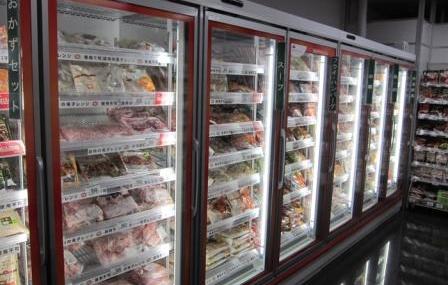Asia Continues to Dominate Growth in Global Grocery Retailing

The global grocery retail market will add $2.7 trillion in sales to 2022, with growth in the next five years dominated by Asia, according to new forecasts released today by international grocery research organisation IGD. Asia’s grocery retail market will be significantly boosted by a rising population and increased shopper spend, with consumer spending in the region accounting for nearly half of additional sales generated to 2022.
Global growth will be driven by several factors including inflation, population growth and increased consumer spending on grocery products.
Key findings from IGD’s global grocery forecasts to 2022 include:
* Asia’s grocery market will add $1.2 trillion in sales, which is more than Africa, Europe and Latin America combined, and will enjoy a compound annual growth rate (CAGR) of 6.6%
* With a CAGR of 4.2%, Europe is set to benefit from the biggest increase in shopper spend, driven by countries in Central and Eastern Europe (CEE)
* North America will add almost $100 billion to its grocery retail market by 2022
* Latin America’s market will be dominated by Brazil and Mexico, accounting for nearly 10% of sales.
 Jon Wright, Head of Retail Insight, IGD, says: “Our new global grocery forecasts reveal a positive outlook for the sector as we predict that most regions will experience faster growth to 2022 than forecast in 2016, representing excellent opportunities for retailers and manufacturers. However, an awareness of the underlying causes of growth in each region is key. Despite it being set to experience the strongest uplift, growth in Africa’s grocery market will be primarily driven by inflation rather than increased consumer spend. The most attractive and sustainable growth opportunities are in markets where sales increase will be due to population growth or consumers spending more money – for example, Asia, Latin America and North America.”
Jon Wright, Head of Retail Insight, IGD, says: “Our new global grocery forecasts reveal a positive outlook for the sector as we predict that most regions will experience faster growth to 2022 than forecast in 2016, representing excellent opportunities for retailers and manufacturers. However, an awareness of the underlying causes of growth in each region is key. Despite it being set to experience the strongest uplift, growth in Africa’s grocery market will be primarily driven by inflation rather than increased consumer spend. The most attractive and sustainable growth opportunities are in markets where sales increase will be due to population growth or consumers spending more money – for example, Asia, Latin America and North America.”
On Asia, Jon Wright says: “With China, India and Japan all in our top five, Asia’s grocery market continues to be in rude health thanks to growing populations and shoppers with more disposable income. Innovations in this market also continue apace, especially in China, where retailers are experimenting to drive the online and convenience channels.”
On Latin America, Jon Wright says: “Brazil, which has moved up into fourth position in the global rankings, continues to dominate this region, with a forecast CAGR of 7% for the five-year period. As the country’s economic backdrop improves, premium grocery formats should provide manufacturers with great opportunities, while the convenience channel will also be an important area of growth in Brazil in the next five years.”
On Europe, Jon Wright says: “Despite a more challenging economic outlook in Europe, the region’s grocery market will experience buoyant growth, driven by CEE countries, which will outpace their Western European counterparts. Growth will be driven by local retailers that are planning extensive store opening programmes in large markets like Russia and Romania, where market consolidation is still low.”
On North America, Jon Wright says: “With the US in the top spot in the global rankings, it is also experiencing strong growth, with the online and convenience channels to grow fastest in the next five years. We expect further consolidation and acquisitions in the market, with deals going beyond grocery as partnerships are formed with operators in other sectors like technology, food-to-go and pharmaceutical.”
Top 20 largest grocery markets in 2022: nominal rates
|
Country |
2022 value ($bn) |
CAGR 2017-2022 |
|
| 1 |
USA |
1,722 |
3.6% |
| 2 |
China |
1,671 |
5.8% |
| 3 |
India |
812 |
11.2% |
| 4 |
Brazil |
509 |
7% |
| 5 | Japan | 455 | 0.5% |
| 6 | Russia | 401 | 4.8% |
| 7 | Indonesia | 313 | 7.5% |
| 8 | Germany | 295 | 2% |
| 9 |
France |
279 | 2.1% |
| 10 | United Kingdom |
278 |
2.9% |
| 11 | Mexico | 256 | 5.3% |
| 12 | Turkey | 217 | 11.7% |
| 13 | Italy | 215 | 2% |
| 14 | Nigeria | 176 | 11.7% |
| 15 | Philippines | 153 | 9.1% |
| 16 | Pakistan | 145 | 9.1% |
| 17 | South Korea | 141 | 4.3% |
| 18 | Spain | 139 | 2.3% |
| 19 | Bangladesh | 112 | 11% |
| 20 | Canada | 112 | 3.1% |

































